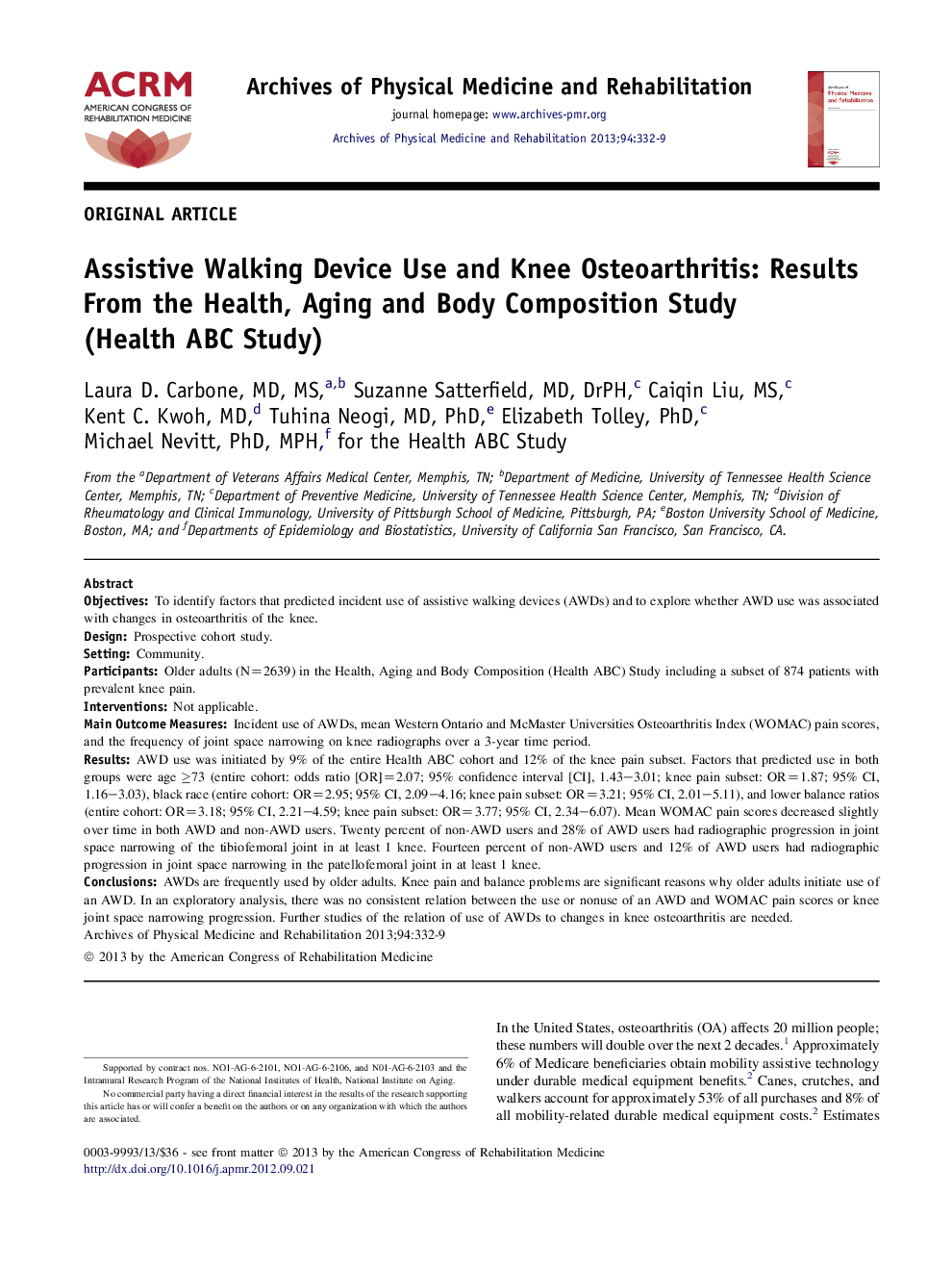| کد مقاله | کد نشریه | سال انتشار | مقاله انگلیسی | نسخه تمام متن |
|---|---|---|---|---|
| 3448906 | 1595715 | 2013 | 8 صفحه PDF | دانلود رایگان |

ObjectivesTo identify factors that predicted incident use of assistive walking devices (AWDs) and to explore whether AWD use was associated with changes in osteoarthritis of the knee.DesignProspective cohort study.SettingCommunity.ParticipantsOlder adults (N=2639) in the Health, Aging and Body Composition (Health ABC) Study including a subset of 874 patients with prevalent knee pain.InterventionsNot applicable.Main Outcome MeasuresIncident use of AWDs, mean Western Ontario and McMaster Universities Osteoarthritis Index (WOMAC) pain scores, and the frequency of joint space narrowing on knee radiographs over a 3-year time period.ResultsAWD use was initiated by 9% of the entire Health ABC cohort and 12% of the knee pain subset. Factors that predicted use in both groups were age ≥73 (entire cohort: odds ratio [OR]=2.07; 95% confidence interval [CI], 1.43–3.01; knee pain subset: OR=1.87; 95% CI, 1.16–3.03), black race (entire cohort: OR=2.95; 95% CI, 2.09–4.16; knee pain subset: OR=3.21; 95% CI, 2.01–5.11), and lower balance ratios (entire cohort: OR=3.18; 95% CI, 2.21–4.59; knee pain subset: OR=3.77; 95% CI, 2.34–6.07). Mean WOMAC pain scores decreased slightly over time in both AWD and non-AWD users. Twenty percent of non-AWD users and 28% of AWD users had radiographic progression in joint space narrowing of the tibiofemoral joint in at least 1 knee. Fourteen percent of non-AWD users and 12% of AWD users had radiographic progression in joint space narrowing in the patellofemoral joint in at least 1 knee.ConclusionsAWDs are frequently used by older adults. Knee pain and balance problems are significant reasons why older adults initiate use of an AWD. In an exploratory analysis, there was no consistent relation between the use or nonuse of an AWD and WOMAC pain scores or knee joint space narrowing progression. Further studies of the relation of use of AWDs to changes in knee osteoarthritis are needed.
Journal: Archives of Physical Medicine and Rehabilitation - Volume 94, Issue 2, February 2013, Pages 332–339